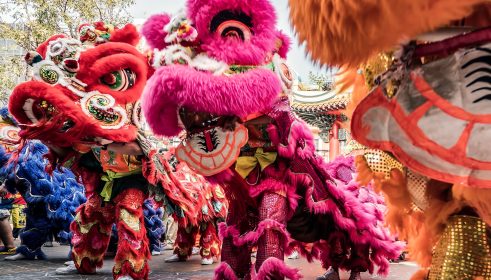Everyone has a dish that reminds them of their childhoods. This — and the “last meal” that a person would select were he or she able to choose — are two of the most illuminating things you can know about a person, telling you how they see themselves, and how they grew up. I’m not the only person to think this (although there is no “childhood meal” book — I mean, we have the TGI Friday’s menu for that); in 2007, photographer Melanie Dunea asked some of the most famous chefs in the world what meal would be their preferred parting shot, and the result was “My Last Supper”.

It turns out chefs are as varied as regular people when it comes to what they want, and the setting: Daniel Boulud likes Versailles, Gordon Ramsay likes home. Jacques Pepin, characteristically elegant, wants a hot dog; BLT chef Laurent Tourondel, a Krispy Kreme doughnut. Some even chose soundtracks, with U2 making an appearance (why? If it’s post-”Unforgettable Fire”, I shake my head and judge).
I really don’t know what my last meal would be. I used to say a cold lobster with mayonnaise; sometimes I think I prefer meatloaf with a side of mac and cheese. But neither of these dishes says anything about me. The dish that figures most prominently in my childhood, and the one I keep coming back to again and again in Bangkok (like a culinary Don Quixote, or an idiot) is kanom jeen nam ngiew, a Northern Thai dish of minced pork and/or beef and dried ngiew blossoms.
It is a widely accepted fact that good Northern Thai food is hard to find in Bangkok. This is not just a bunch of Northerners pissing and moaning about Central people mucking around with beloved old favorites (although there is some of that). For some reason, something is lost in translation that isn’t when it comes to any other region in Thailand, be it Isaan or Southern Thai. It’s not heat: actually, Northerners cannot compare to Southern Thais when it comes to spicy food. I think it’s the shortcuts that people are tempted to take with northern food, which features a lot of cut or shredded herbs and painstakingly put-together pastes (plus a lot of fatty cuts of pork to combat the “cold” weather). I cannot tell you how many nam ngiew noodles I have had missing the dried dok ngiew, or ngiew flowers, which resemble sawed-off broomsticks. The fact they still serve it without essential ingredients suggests laziness, and disrespect to the customer.

Yet I haunt every food stand serving nam ngiew, and order it at restaurants when I know I shouldn’t; against all logic, I want to find The One that will bring me back home. Home to New Castle, Pennsylvania, where I wanted to dine on cavatelli (“cavads”) like everyone else in my predominantly Italian-American town, and look forward to wedding soup or pasta fagioli (pronounced “fazool”) on holidays. Home, where I would see my dad in his pajamas stuffing his own sai oua on the floor of our kitchen and feel unaccountably embarrassed. Home, where my dad would have to refer to nam ngiew as “Thai spaghetti” to get us to eat what he cooked after a 14-hour work day. And it does resemble bolognese, after a fashion (possibly a reason why I LURVE spaghetti bolognese). But it’s much, much better — meaty and rich and a little bit macho, and, if you’re from Chiang Rai, skimpy on the girly tomatoes that effete Chiang Mai-ers use to balance out all that heft (Chiang Mai people, I jest. My mom’s family is from Chiang Mai).
So where is the best place to get this very special dish? My house, where I keep two bags of sauce at all times. Also, Chiang Rai’s Pa Suk, which probably has the best nam ngiew on earth (sorry, Chiang Mai). The sauce comes in pork or beef versions (beef is VERY beefy), with fermented rice noodles (kanom jeen) or regular guay thiew (rice noodles). Also, they offer a wide variety of pork rinds (kaab moo) because no bowl is complete without them. – Chawadee Nualkhair – Author of Bangkok’s Top 50 Street Food Stalls
Preparations:
1. Nam Prik: Grind the following together well
Dried pepper, 30 pieces
Dried Bird Chillis, 30 pieces
Shallots, 0.2 Kilo
Garlic, 0.1 Kilo
Shrimp paste (Kapi), 0.1 Kilo
Lemon Grass, 3 pieces (stems)
Salt, 1 tablespoonful
Grilled dried pickled bean paste, 0.2 Kilo
2. Next, boil until slightly soft:
Pork spare ribs, cartilage parts, 1 Kilo, cut into 1 inch pieces. Save cooking liquid.
To cook:
- Fry “Nam Prik” in hot vegetable oil in a big pot until it “smells good” (the inside of your nose tickles). Add 1 Kilo of ground pork and the cooked spare ribs. Stir until cooked. Add the soup from the cooked spare ribs. Then add 1 Kilo of cherry tomatoes, add cooked pork blood in pieces and 0.1 Kilo of dried “Ngiew Flowers”. Add 0.2 Kilo of Black Tao Jeao.
Boil in medium temperature until well blended. Before serving on kanom jeen, add fish sauce and lime juice to your taste.
- Serve with:
- Deep fried chopped garlic
- Chopped shallots
- Cut shallots
- Cut limes
- Cut pickled greens
- Ground deep-fried dried chillies










